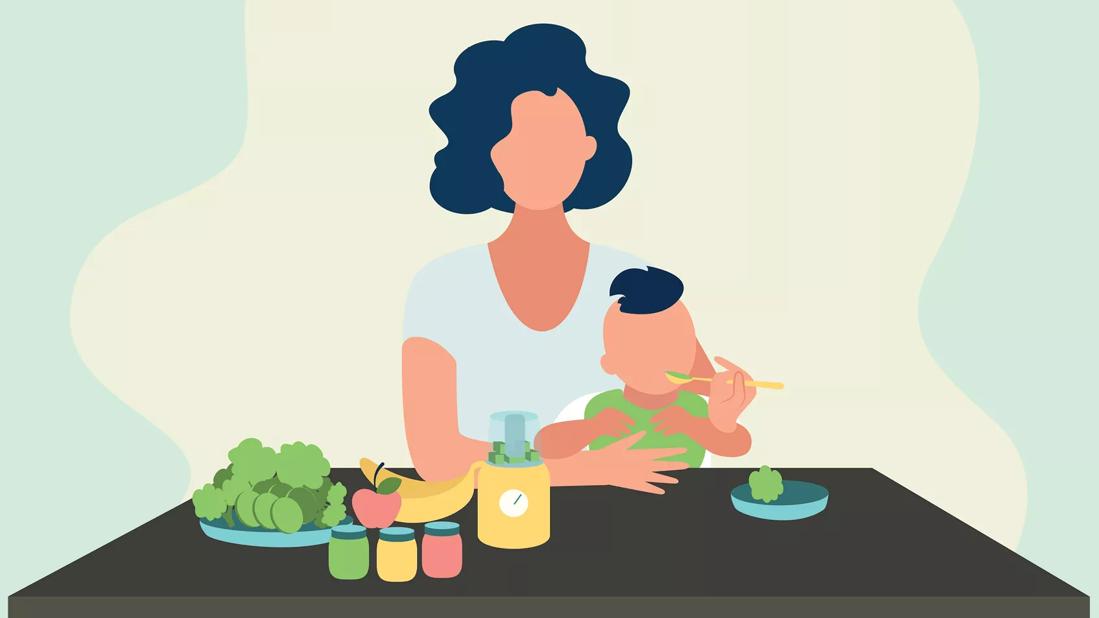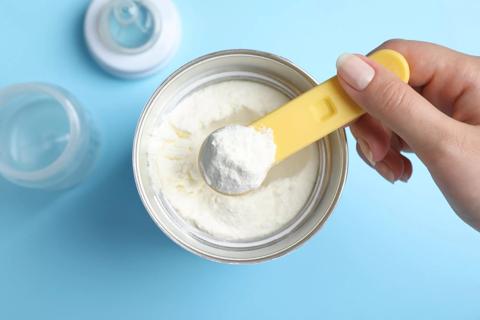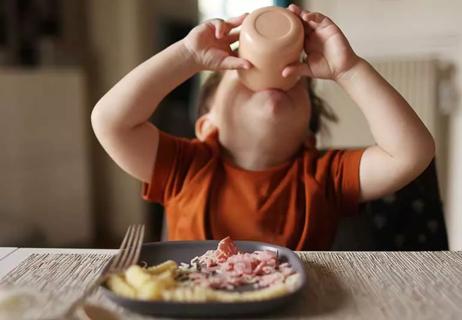Slowly introducing cow’s milk (or soy milk) can help your child make the change

Make the formula. Feed your cutie. Wash, rinse, repeat. For parents of babies who gulp down bottles of formula, you’ve been doing this routine several times a day (and night) for what seems like forever.
Cleveland Clinic is a non-profit academic medical center. Advertising on our site helps support our mission. We do not endorse non-Cleveland Clinic products or services. Policy
But the end is in sight. Your baby is finally old enough and ready to transition to cow’s milk or a milk alternative.
Here’s how to make it happen, explains pediatrician Radhai Prabhakaran, MD.
The switcheroo from formula to milk typically comes after your child’s first birthday. Up until that point, growing babies need the vitamins and nutrients packed into formula or breast milk, says Dr. Prabhakaran.
But fortified formula becomes less essential as your kiddo starts eating solid foods. Fruits, vegetables, grains and meats begin filling their nutritional needs spoonful by spoonful. (Open wide! Yum-yum-yum!)
Whether babies are ready to hop aboard the milk express depends on their taste for table food.
“Some babies settle into a mostly solid food diet early [between 9 and 12 months] because they like it and it agrees with them,” notes Dr. Prabhakaran. “If they’re eating a nutritionally balanced diet, then it’s OK to wean your baby off formula by age 1.”
Babies may not be able to talk, but they can express strong opinions — especially when it comes to eating. (Remember that shiver-and-gag reaction they gave a certain food? There’s your sign!)
Your little one’s initial judgment on milk will go a long way toward deciding how to work dairy into their diet, says Dr. Prabhakaran.
An immediate love of dairy makes the process easier. So if milk brings your child a big smile:
The transition to milk won’t be as simple if your baby seems to cling to formula as their #1 option. Try these steps to ease the transition.
Ease off on making the change from formula to milk if your child starts to experience stuffiness or you see a dramatic change in their stools, says Dr. Prabhakaran. These symptoms could be a sign of a potential dairy allergy.
Signs your baby may not be able to tolerate cow’s milk include:
Talk to your baby’s pediatrician if those symptoms appear. If needed, your healthcare provider can recommend safe milk alternatives.
Your baby should continue with formula if they:
“And if your doctor has already told you that your baby might need to go on a special diet, talk to them before weaning your baby off formula,” adds Dr. Prabhakaran. “They can help you put a nutrition plan in place that will make the transition safer.”
Whole milk is generally recommended for toddlers, who need the extra fat in the drink to boost growth and brain development. “The general rule is whole milk until they’re 2 years old unless there are specific circumstances,” says Dr. Prabhakaran.
Your doctor may recommend 2% milk instead if your baby:
Fortified soy milk is considered the primary milk alternative that can meet a child’s nutritional needs, according to the Centers for Disease Control and Prevention. Choose an unsweetened variety to avoid excess sugar. Make sure it is fortified with vitamin D and calcium.
Talk to your child’s healthcare provider about the milk alternatives you are considering.
“There are so many choices and babies’ diets vary so much. It’s impossible to have a blanket rule for what’s OK,” says Dr. Prabhakaran. “Your baby’s doctor can help you find the best alternative to help your child with specific deficiencies and their overall nutrition.”
As long as you’re saying goodbye to formula, why not get rid of that baby bottle, too? Drinking from a bottle is typically a no-no after age 1. “Bottle-feeding can affect teeth growth and cause cavities,” says Dr. Prabhakaran.
So look to transition to a sippy, straw or regular cup. “If you’re feeling really adventurous, wean them off formula and the bottle at the same time.”
Learn more about our editorial process.

In babies under 12 months, honey may cause a serious illness called infant botulism

When breastfeeding doesn’t go as planned, you may need to supplement with formula or donor breast milk — and that’s OK

Look for snacks that are low in sugar and high in fiber, protein and healthy fats

No amount of caffeine is safe for kids under 12, and kids 12 to 17 should be cautious about how much they consume

They aren’t unhealthy, but they’re probably a waste of money

Tiny kidneys and tiny tummies don’t mix well with water

Turn down the pressure, but don't stop offering

The five major food groups offer different types of nutrients in the right proportions

Your metabolism may torch 1,300 to 2,000 calories daily with no activity

A gentle touch in all the right places may help drain your sinuses